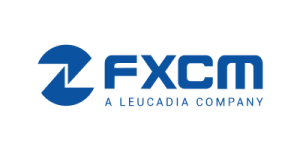Fundamental analysis in Forex is mainly based on the study of macroeconomic data, but also on political, social and natural factors. It is widely used to predict price movements in currencies. In this article we will make a small approach to its main theories and most used methods.
Most Forex traders prefer technical analysis to fundamental analysis perhaps because they need less knowledge of economics, but both are complementary analyzes, so if you want to trade in this market it is a good idea to know what it is about in order to take advantage of its benefits.
What is fundamental analysis?
There are two approaches to predicting price movements in the Forex Market; while technical analysis is based on historical price data, fundamental analysis is based on the study of economic factors that affect supply and demand. It is an attempt to discover the true value of a currency, which may differ from its current value. This analysis has based in various economic theories and includes the monitoring of political events and macroeconomic indicators that influence the development and stability of markets.
The economic calendar
The economic calendar is a very important tool for Forex investors that helps in tracking events. It is scheduled by dates, the publication of economic indicators with the respective forecasts of specialists and the possible degree of impact on the market.
This analysis focuses on the macroeconomic situation and the future expectations. There is a huge amount of economic news that is published daily around the world, but it is suitable to focus on the most influential announcements, avoiding being overwhelmed with the vast amount of information available. Among the most closely followed macroeconomic indicators are: interest rates, employment, GDP, consumer confidence, inflation and money supply.
Most economic theories work in the long term, but the publication of economic data has a short-term impact from the moment it is released, allowing you to anticipate and take advantage of trading opportunities.
Economic theories of fundamental analysis
Fundamental analysts use different theories to determine the possible value of a currency and forecast its possible future movements. The objective of this article is not to delve into the different theories, but to make a brief approach to them.
Balance of payments
The Balance of payments (BOP) is a macroeconomic indicator that records the commercial operations and capital movements of a country with the outside during a determined period of time. It is very important to examine the relations of a country with the outside and is divided into two accounts:
- Current account: Trade in goods and services of a country with the outside.
- Capital account: Money flows to and from the country.
Its balance can be positive or negative. In the event that the balance is positive, it is said to have a surplus. On the contrary, if the balance is negative, it is a deficit.
The Balance of Payments Theory indicates that prices must be in equilibrium. If there is a deficit, its currency will depreciate to compensate for the imbalance and it could be financed, among other ways, with loans from abroad. On the other hand, if there is a surplus, the currency will appreciate to compensate. A country with a depreciated currency boosts its exports by making them cheaper.
Purchasing power parity
The Purchasing power parity theory states that exchange rates between currencies are in equilibrium when their purchasing power is the same anywhere in the world. It is an economic indicator that measures prices in different places and makes it possible to compare purchasing power between different countries.
In an ideal scenario, products with similar characteristics should be priced equivalently anywhere in the world. For example, if the value of a product in the US is 2 dollars and in the UK 1.50 pounds then the GBP / USD exchange rate should be 1.3333.
To see this theory more clearly, you could review the following indices:
- Big Mac Index: Published by The Economist comparing the price of a McDonald’s Big Mac hamburger between various countries. https://www.economist.com/big-mac-index
- Index Purchasing Power Parities (OECD): The Organization for Economic Cooperation and Development publishes the (PPP) of different countries using a basket of consumer goods. https://www.oecd.org
Monetary model
The Monetary model states that the exchange rates of a currency are determined by the monetary policies of the country. Argues that the value of the currency depends on the money supply, inflation rates, and interest rates.
An increase in the money supply brings with it an increase in prices, which causes an increase in inflation and interest rates. In countries with a stable monetary policy, the value of their currencies generally increases over time, on the contrary, countries with unstable monetary policy, experience a depreciation of their currencies.
Interest Rate Parity
Interest rate parity (IRP) establishes that the interest rate differential between two countries is equal to the differential that exists between the current (spot) and future (forward) exchange rates. The difference between the forward rate and the spot rate is known as swap points.
In this way, if there is a positive difference in interest rates, there must also be a difference between the current and future exchange rates, consequently maintaining the balance. It should be noted that this condition is not always take place by allowing interest rate arbitrage opportunities. An example of this is the Carry trade that exploits a possible imbalance in the parity of interest rates.
For many years, currencies with high interest rates have tended to appreciate primarily for this reason. Similarly, the currencies sold tend to weaken.
Several studies have confirmed that forward rates are not reliable in predicting future spot rates as they are simply exchange rates adjusted for interest rate differentials.
A lower interest rate currency will trade at a forward premium relative to a higher interest rate currency.
Conclusions – Fundamental analysis in Forex
So far this brief approach to fundamental analysis in Forex and some of its economic theories. Always remember that the currency market does not depend only and exclusively on economic factors, but also on political, social and natural aspects.
In short, fundamental analysis may not be the best tool for a short-term trader because it may offer a better long-term view of the market. It may actually require a lot of time and more knowledge of economics than other analyzes, but it can certainly be a perfect complement to technical analysis.
- What is FOREX?Do you want to know what Forex is? An approach to the subject with detailed and useful information on its operation and main characteristics.
- Types of brokersThere are several types of Forex brokers and learning about them can have a huge impact on your Forex trading experience.
- 10 Basic Forex Terms We Should Know.There are certain basic Forex terms that we must know before operating in the markets and thus have a greater chance of success.
- How to choose a Forex broker?In this article we will show you how to choose a Forex broker, but not just any one, but one that suits your needs.
- Regulation in the Forex marketRegulation in the Forex market is one of the main criteria that must be analyzed before choosing a broker.





